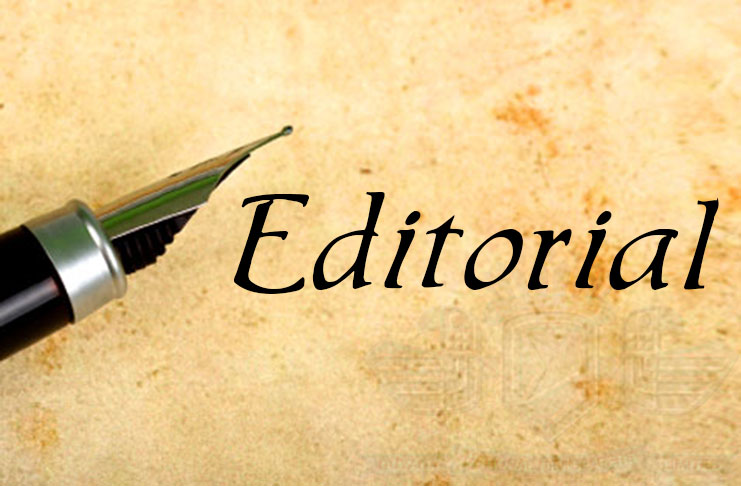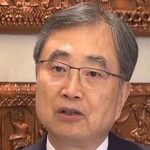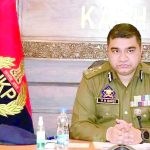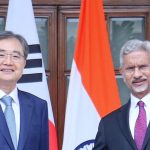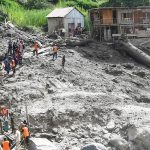The socio-political situation that has emerged in Ladakh is alarming keeping in view the public outrage that has manifested on roads. The Ladakh bandh observed by the people and response in terms of convergence for the agenda set by the Leh Apex Body (LAB) and the Kargil Democratic Alliance (LDA) shows that there is a simmering that goes beyond the obvious. The four point agenda of the demonstrators under the leadership of the LAB and LDA includes statehood, sixth schedule status, Public Service Commission (PSC) and two Parliamentary seats for Ladakh. As far as the demands are concerned there is no issue is raising them. Even the central government has taken the note of the agitation and given prompt response. A High Powered Committee (HPC) meeting has been called by Union Home Minister of State for Home Nityanand Rai in New Delhi on 19th February to address the issues being raised by Ladakhis. The demonstrators have given an ultimatum that if their demands are not met after the stipulated date of the meeting then the on-going agitation will take the form of 1989 agitation. The Ladakhi leadership is desperate and is stuck to the date of 19th February for the resolution of their issues. As there will be no Parliament session of the present Lok Sabha after this date. It is interesting to note that this agitation has taken the confrontationist turn after the political reorganisation of Jammu and Kashmir. Union Territory of Ladakh was carved out of the erstwhile state of Jammu and Kashmir. It was a long pending demand of the Ladakhis that to end the discrimination with the region a separate union territory of Ladakh be carved out. Right from the inception of the accession of Jammu and Kashmir with India in 1947.The Ladakhis had been demanding the segregation of their region under the leadership of the Ladakh Buddhist Association (LBA).Prominent spiritual figure of national standing Kushak Bakula was in the forefront of this struggle and gained the currency in the political narrative. In fact this movement gained further currency when in 1990 ethno religious conflict led to the terrorist violence in Jammu and Kashmir and developed various fault lines in the society. Many political forces joined hands to insulate their communities from the bloodshed, threat to life and limb of the people due to terrorism. An initiate called Peoples Initiative for Peace and Unity (PIPU) was created. It was an amalgam of three organisations that included Ladakh Buddhist Association (LBA), Jammu Joint Students Federation (JJSF) and Panun Kashmir (PK).These organisations demanded the political reorganisation of Jammu and Kashmir. So that people of their communities be delivered justice. These organisations represented the aspirations of the overall minorities in Jammu and Kashmir. Their demands were materialised to some extent when the union territory of Ladakh was carved after the neutralisation of Article 370 and 35 A in 2019.Though the demands of JJSF and Panun Kashmir didn’t materialise. Interesting thing is that once the leading light of BJP in Ladakh Thupstan Chewang is also leading the protestors and the Jamyang Tsering Namgyal is the member of the HPC.BJP was in the forefront of granting the union territory status to Ladakh and got the political traction on this issue. Ladakh has its own political fault lines and these were supposed to be ironed out after the reorganisation of Jammu and Kashmir. And there have been regional differences between the Leh and Kargil on the union territory issue even before the realisation of union territory demand .Now these differences seems to have converted into a complex issue. It has to be watched what will be the turn of events. Will the forces of statehood prevail upon the upholders of the union territory status? It will be in the best interests of Ladakh that the people don’t fall prey to the forces who want to exploit the political fault lines to a create rift between Leh and Kargil.
Search
Archives
- August 2025
- July 2025
- June 2025
- May 2025
- April 2025
- March 2025
- February 2025
- January 2025
- December 2024
- November 2024
- October 2024
- September 2024
- August 2024
- July 2024
- June 2024
- May 2024
- April 2024
- March 2024
- February 2024
- January 2024
- December 2023
- November 2023
- October 2023
- September 2023
- August 2023
- July 2023
- June 2023
- May 2023
- April 2023
- March 2023
- February 2023
- January 2023
- December 2022
- November 2022
- October 2022
- September 2022
- August 2022
- July 2022
- June 2022
- May 2022
© 2022 Foxiz News Network. Ruby Design Company. All Rights Reserved.



